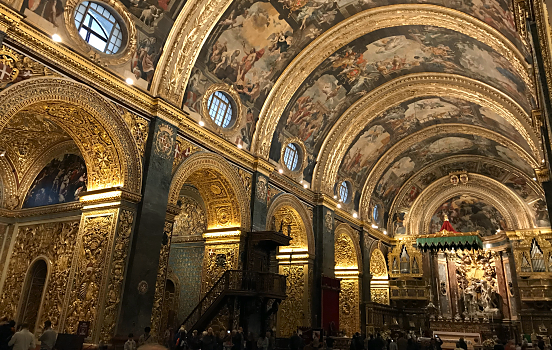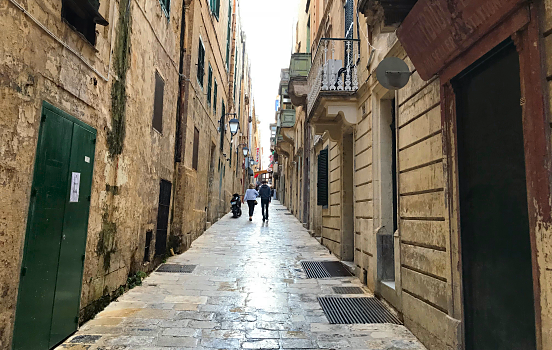Valletta is a city built by knights and battered by time, perched like a stubborn old cat on Malta’s rocky spine, staring defiantly at the Mediterranean.
Traces of the Knights of St. John are visible all over the capital of Malta, the baroque fortified city they created. I stand upon the city wall at Upper Barrakka Gardens, looking down at Fort St. Angelo where the Knights lived before the great siege of 1565.
Siege? Oh yes. Due to its strategic location, Malta has seen its fair share of history for millennia. Starting with visits from Phoenicians in 750 BC, followed by Romans, Christianity, Moors, Norman conquest, Ottomans, French and British before finally receiving independence in 1964.
 The walls of Valletta.
The walls of Valletta.
Valletta was one of the first European cities to be designed on a grid system, since it was constructed instead of naturally evolved over time. It’s easy to navigate the grid and soon I stood outside the Palace of the Grand Master.
I pass the statue of Jean de Valette, the 49th Grand Master who laid the foundation stone to Valletta in 1566, to gaze at the golden interior of St. John’s Co-Cathedral, where he is buried in the crypt. Baroque on steroids, the gold practically drips off the walls.
 St. John’s Co-Cathedral in Valletta.
St. John’s Co-Cathedral in Valletta.
Many people have seen the Ridley Scott movie Gladiator, but perhaps unaware that it was filmed in a Colosseum replica constructed in Valetta. In addition, Gladiator includes scenes filmed at Fort Ricasoli just east of Fort St. Angelo. Fort Ricasoli also appears as the Red Keep in Game of Thrones, and the city of Troy in the Brad Pitt movie with the same name.
 Straight along the Strait street.
Straight along the Strait street.
At twilight, the city transforms. The stone glows in amber, shadows lengthen and locals shuffle out to the promenade at Republic Street like clockwork. Old men argue politics in Maltese. Kids kick soccer balls under fading British signage. And the Mediterranean just keeps breathing, slow and indifferent.

Comments
No comments yet.
Leave a reply